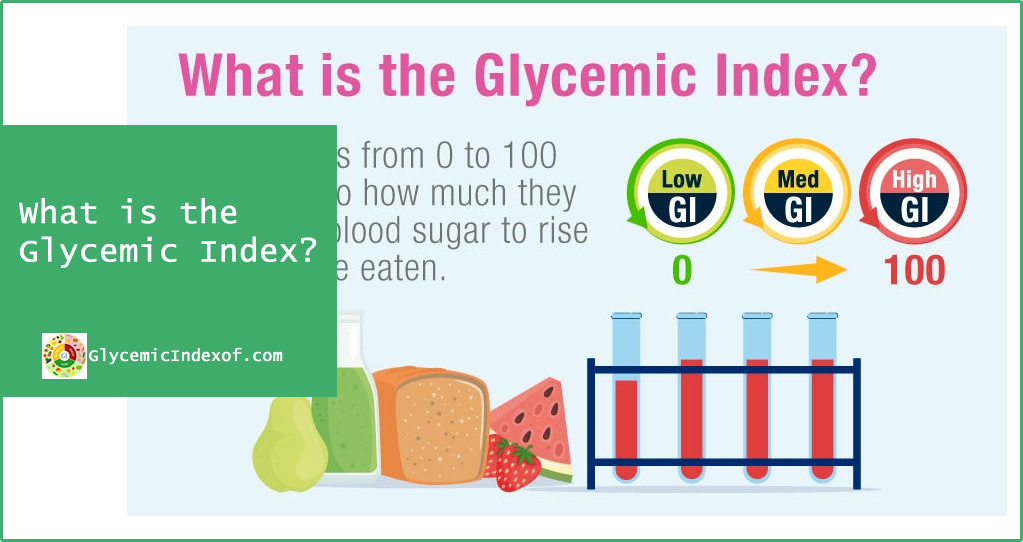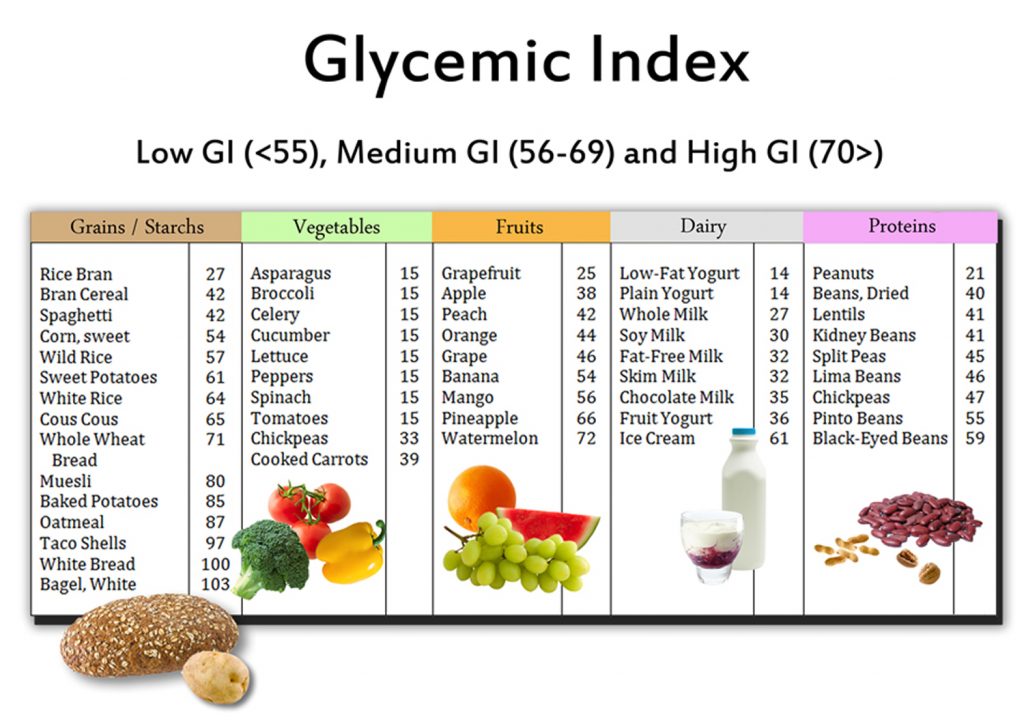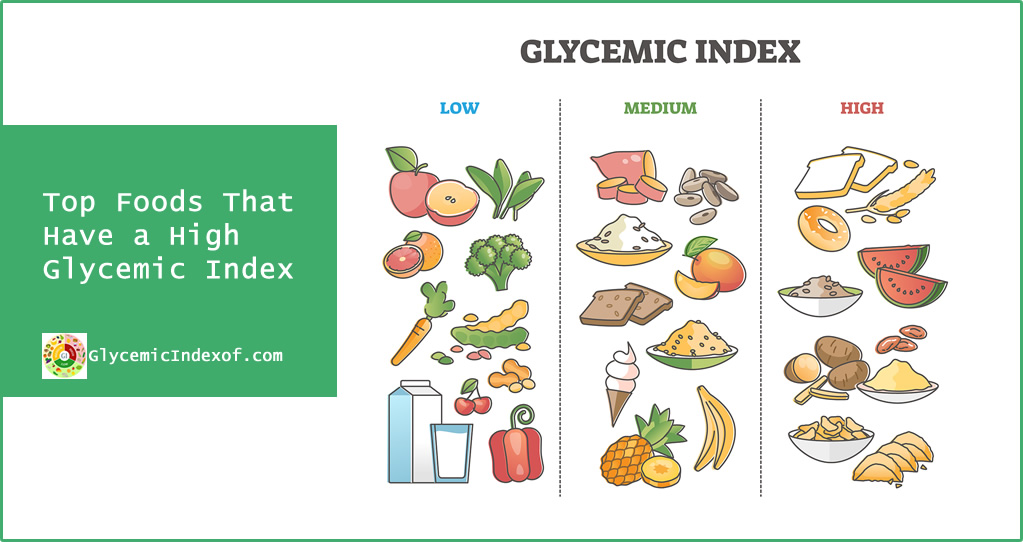So what is the Glycemic Index?
The glycemic index consists of a scale from 1 to 100, indicating the rate at which 50 grams of carbohydrate in a particular food is absorbed into the bloodstream as blood-sugar.
Glucose itself is used as the main reference point and is rated 100.
Foods with a high GI behave in our bodies and those that are digested and absorbed result in marked fluctuations in blood sugar levels.
Although the glycemic index was invented to help diabetes patients manage their blood-sugar levels, dietitians and weight experts now use it as a tool to treat obesity, reduce cravings and appetite swings, and improve eating habits.
High, Intermediate and Low Glycemic Index Foods
The glycemic index separates carbohydrate-containing foods into three extensive categories:
- High GI – 70 or more, cause a rapid rise in blood-glucose levels.
- Intermediate GI 55-69 – causing a medium rise in blood-glucose
- Low GI – 54 or less, causing a slower rise in blood-sugar.
One thing to keep in mind is that you can lower the GI of a food by combining it with a protein or fat. Both protein and/or fat combined with a high GI food will solicit a lower insulin response in the body, most times reducing it to that of a moderate GI food.
Benefits of Low GI Foods
Low-GI foods, by their slow digestion and absorption, produce gradual rises in blood sugar and insulin levels, and have proven benefits for health.
Low GI diets have been shown to improve both glucose and lipid levels (fat) in people with Type1 & Type 2 Diabetes.
Low-GI foods have benefits for weight control because they help control appetite and delay hunger. Low GI diets also reduce insulin levels and insulin resistance.
Choosing low GI carbs – the ones that produce only small fluctuations in our blood glucose and insulin levels – is the secret to long-term health, reducing your risk of heart disease and diabetes and is the key to sustainable weight loss.
Eating low GI carbohydrates slows the release of glucose into your blood stream, keeping your energy levels balanced, and blood sugar levels low. This means you will feel fuller for longer between meals and avoid sugar highs and lows. Other benefits include: Weight loss and weight control, increased insulin sensitivity, improves diabetes control, reduces the risk of heart disease, reduces blood cholesterol levels, reduces hunger, keeps you fuller longer, prolongs physical endurance and re-fuels carbohydrate stores after exercise.
The easiest way to eat more Low Glycemic carbohydrates is to switch your high GI carbohydrates for lower ones. For example, eat breakfast cereals based on oats, whole grains and bran. Choose breads made from whole grains, stone-ground flour and other natural grains. Also, reduce your consumption of white potatoes, white rice and white pastas and choose wild, brown, or basmati rice, whole wheat, vegetable, brown rice pasta and other noodles cooked “al dente”. Enjoy all types of fruit and vegetables and avoid all products with high fructose corn syrup, such as salad dressing, sweetened drinks, and processed foods.
Soon you will be enjoying all the benefits a Low-Glycemic and Moderate Glycemic diet provides.



